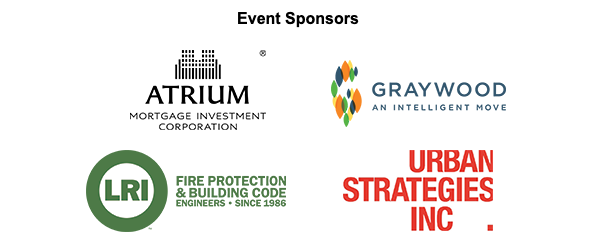Top Story
Urbanizing Suburbia: The Nordic Solution
Urbanizing Suburbia: The Nordic Solution
November 19, 2019
Michelle Rowland, Urban Strategies
Early on October 24th, Anne Morash SVP at GWL Realty Advisors moderated two panels on the future of shopping malls titled “Placemaking at the Mall: The Future of Intensification.” The sold-out crowd assembled at The Globe and Mail Centre on King Street East to hear views from the expert developers and designers that sat on both panels.
Many of the large landholdings for development in the GTA are our shopping malls. Malls in the 1960s were a product of people moving out to the suburbs, but today we are creating new cities in place of our malls. Shifts in both the retail industry to ecommerce and changes in land use to less car-oriented design have paved the way for rethinking malls.
Today many shopping malls across Toronto exist as important social spaces in their communities, as key elements of people’s daily routines. Shopping malls exist not only as retail spaces but as places for community gathering. With many malls identified as spaces for intensification, it can put these community hubs at jeopardy. Malls already have established a strong sense of place and the urban design only needs to amplify that. Panelists discussed how engagement plays such an important role in getting the existing community onboard for the project. This means engaging with the community early and often. With increasing density, developers can afford to give community benefits providing long term assets to the public.
Lisa Chandler of Oxford Properties highlighted the need to consider placemaking opportunities for malls in creating human scale places. The elements of a community that drive good retail also provide for good residential development. When integrating new retail into the master plans, retail should be considered as a higher and better use than simply a bank, for example. More flexible, smaller scale and integrated retail can help to support new complete communities.
In the case for Warren Krug from Brookfield Residential, a mall redevelopment project of his in Honolulu already achieved 52 million visitors a year. Riding the successes of the existing malls is something that developers don’t want to tinker with. Retaining ownership of the malls for developers means that they are considering master plans which have 25- to 40-year timelines. With such a long time horizon, there are opportunities to think big and there is no need to establish limits on creativity. Developers and designers are aware of the ever-changing technologies and the opportunities they can bring to redeveloping large scale sites. Malls are evolving to become complete communities capitalizing on opportunities for residential intensification.
Ralph Giannone of Giannone Petricone Associates Architects Inc. recognized the emotional nature of place. Placemaking at the mall for Giannone is about creating a reaction and providing a magical mix of buildings, programming and public realm. The City of Toronto, when reviewing applications and collaborating with developers, looks for all of the ingredients that make up a complete community says Sarah Henstock from Community Planning in the Etobicoke York District.
There were some key takeaways from the panelists today for audience members embarking on place making mall projects. Firstly, be thoughtful about the context, design and outcomes for the project. Innovation and big ideas can sometimes use a little push. Understand the community that you’re planning in and scope and potential of the retail market. Whether a project is 300 acres or three, places of all scales can create emotional experiences. Malls already exist as community hubs and are places that can be improved, but it’s important to retain what the core function of a mall is in a community. Finally, make smart decisions in the present to preserve for evolutions in the design in the future.
Thank you to our event sponsors!

Don’t have an account? Sign up for a ULI guest account.